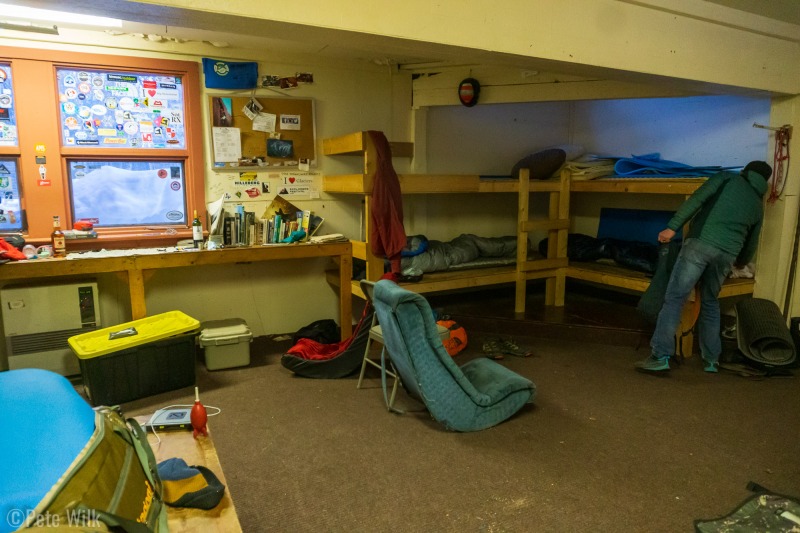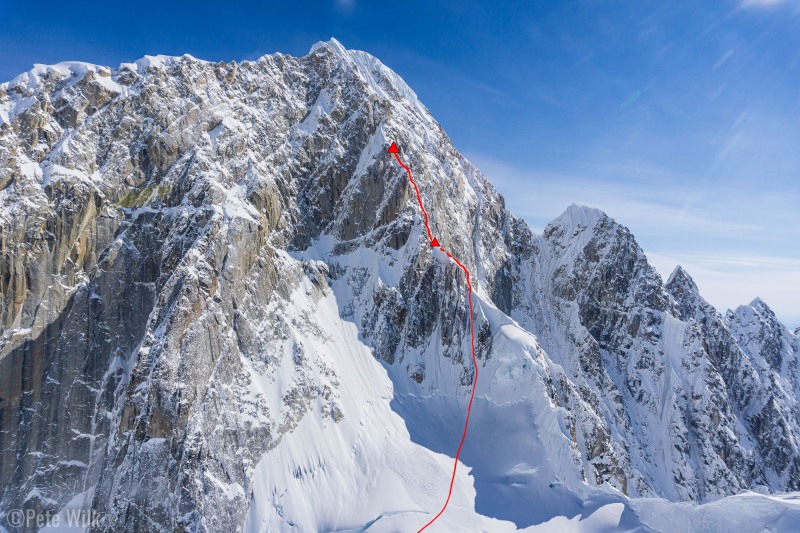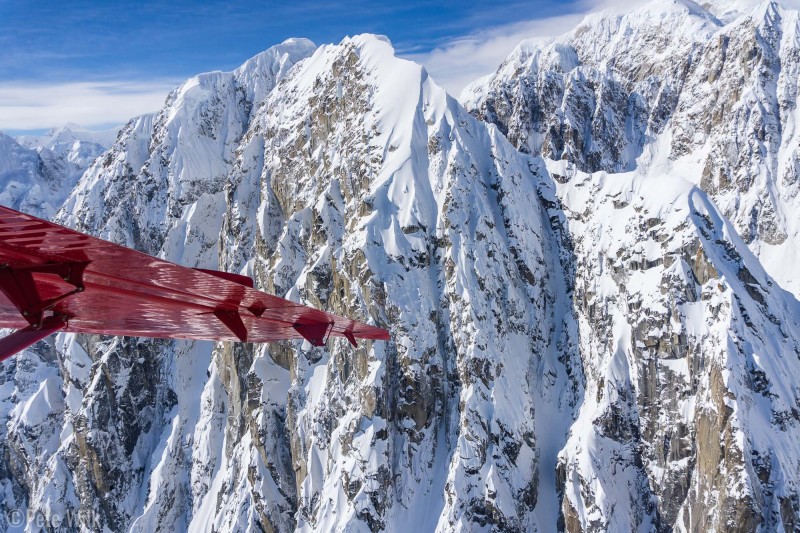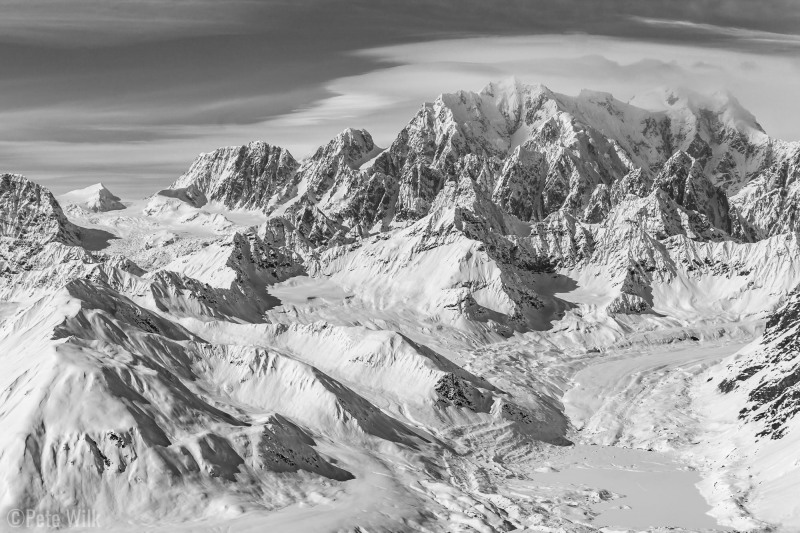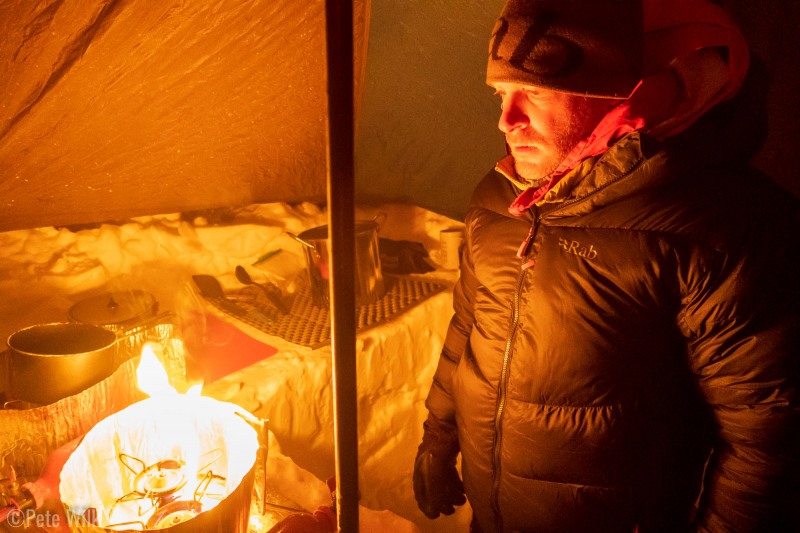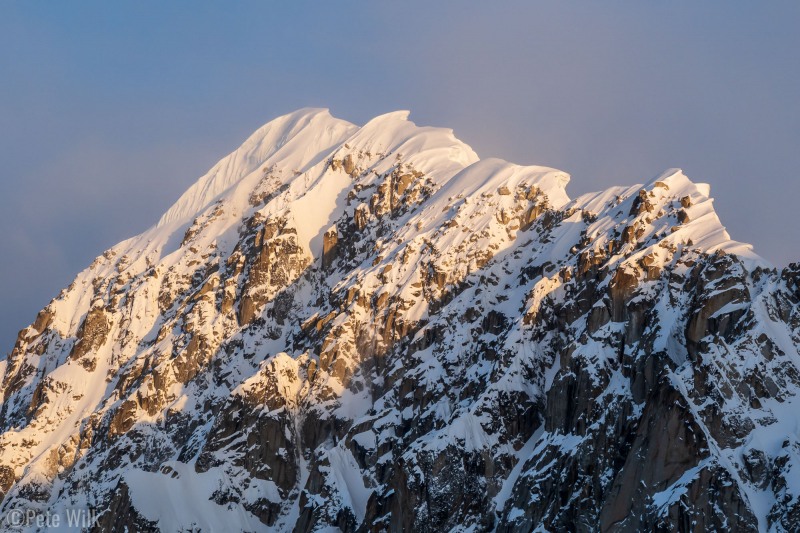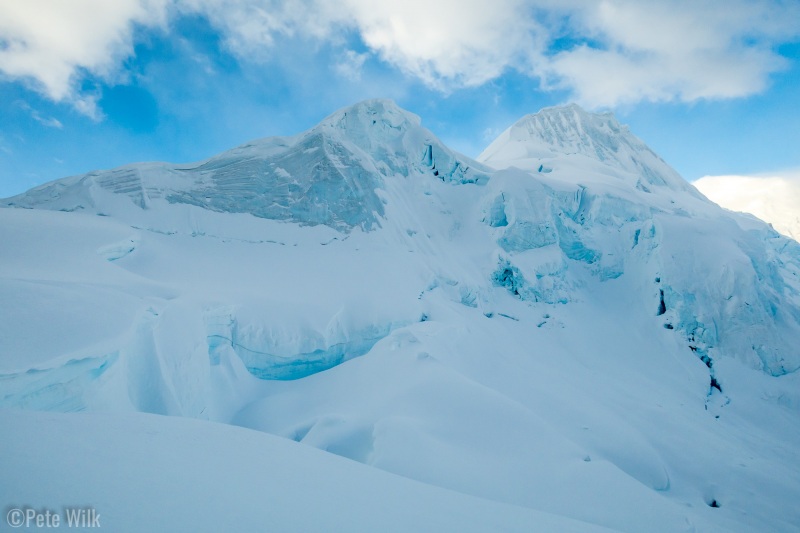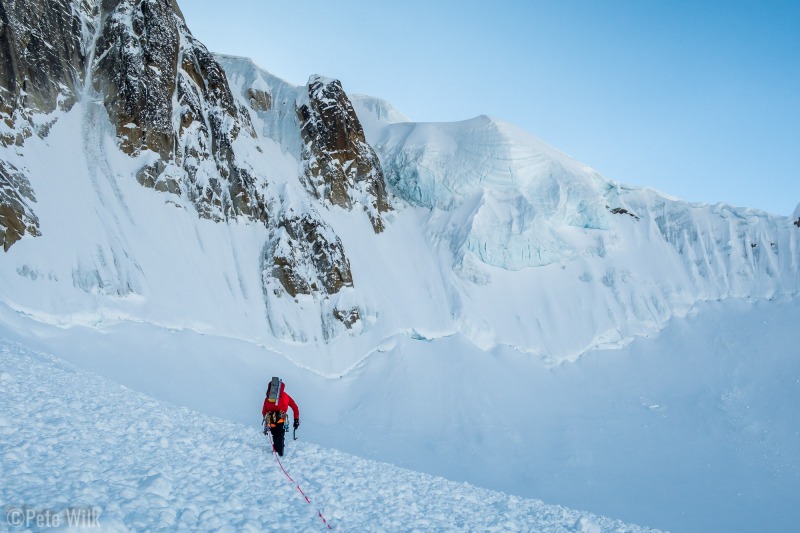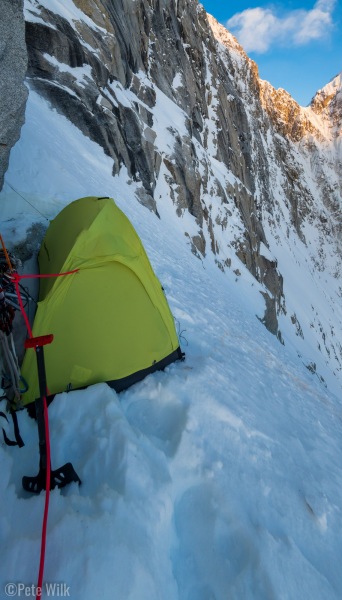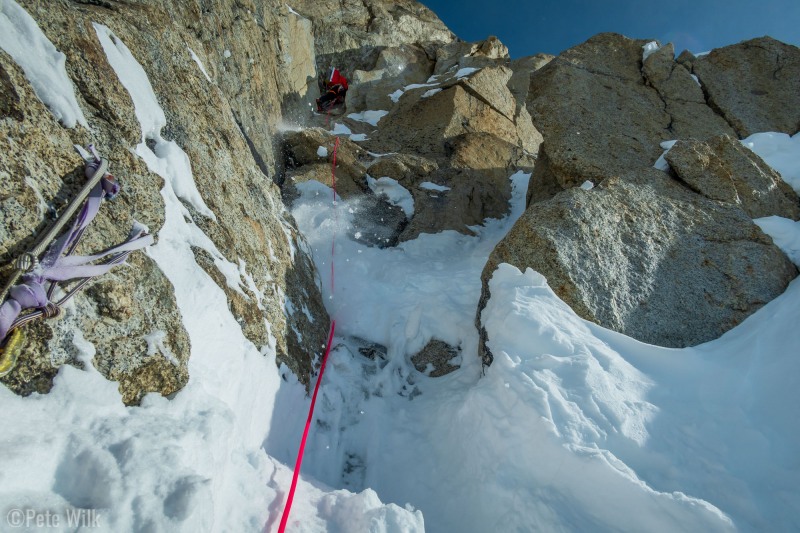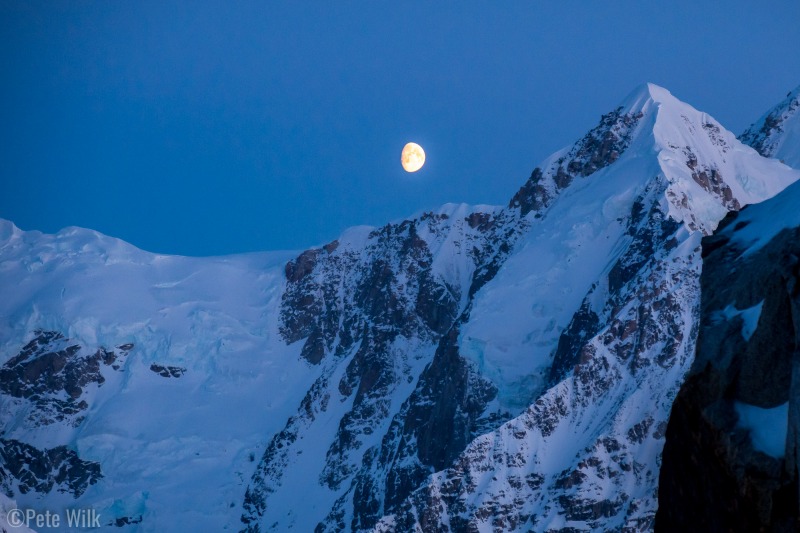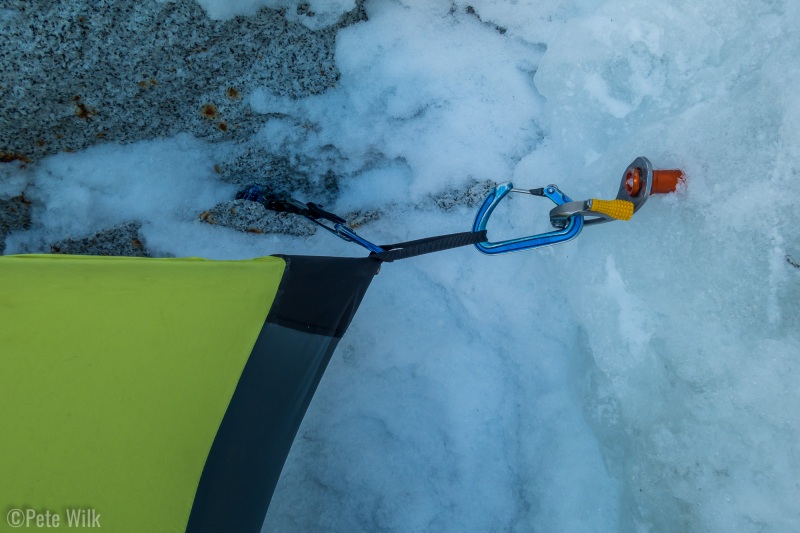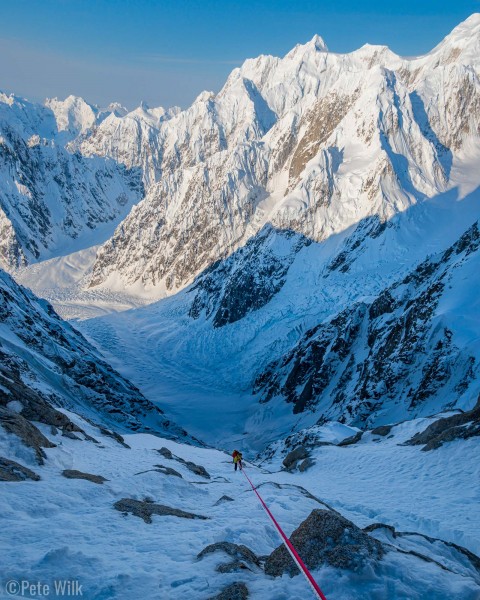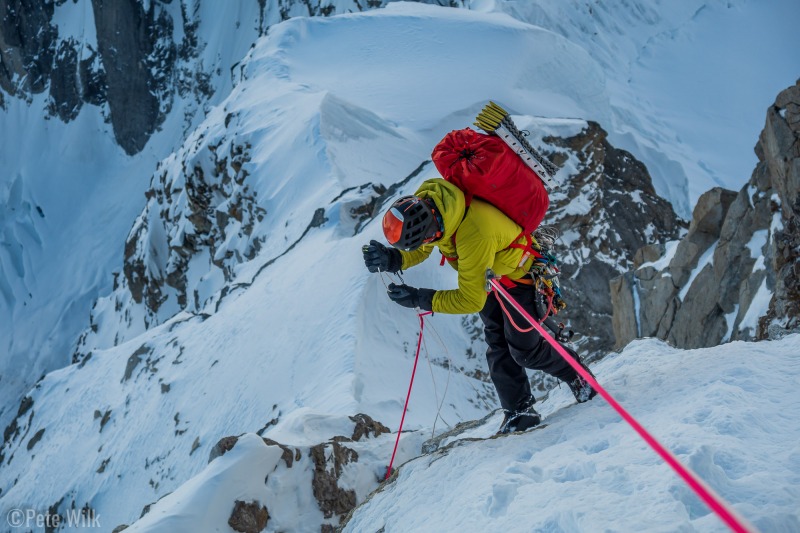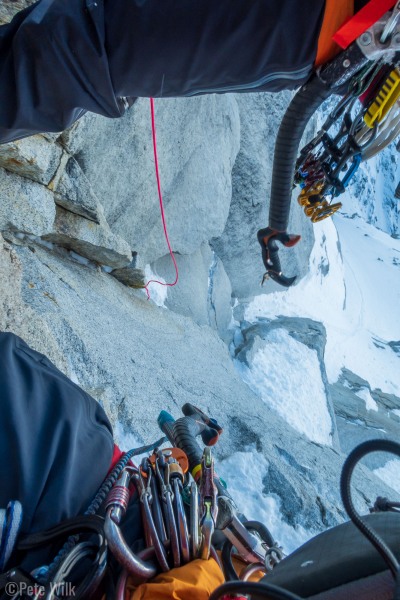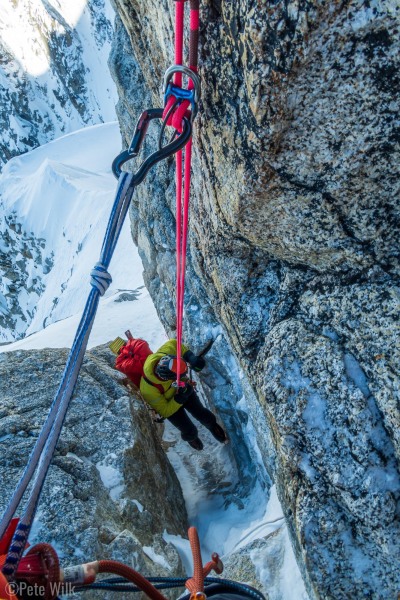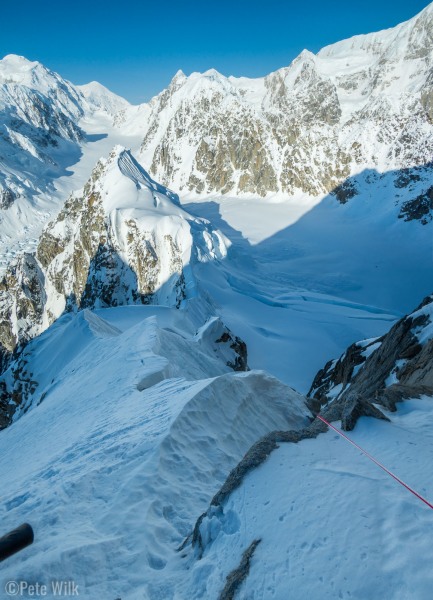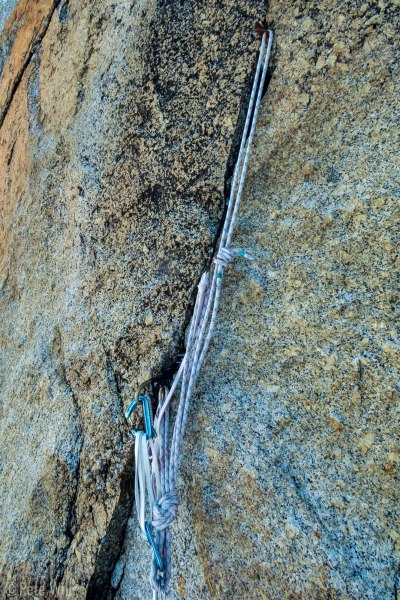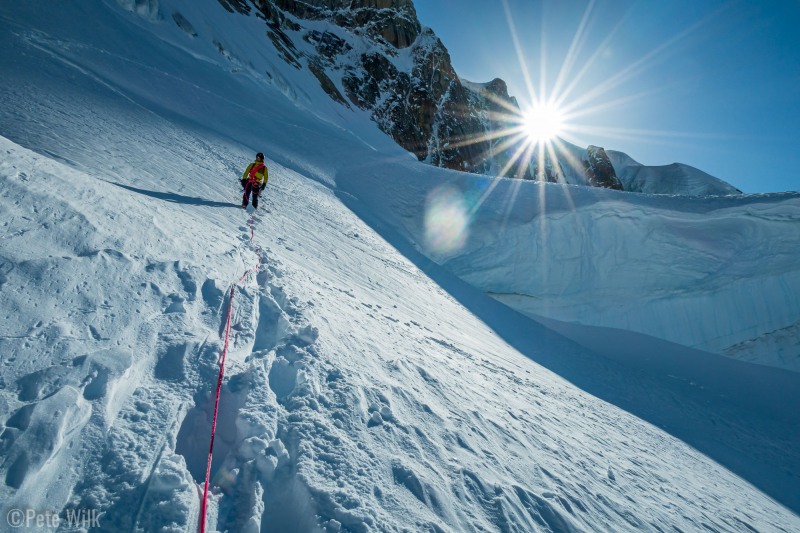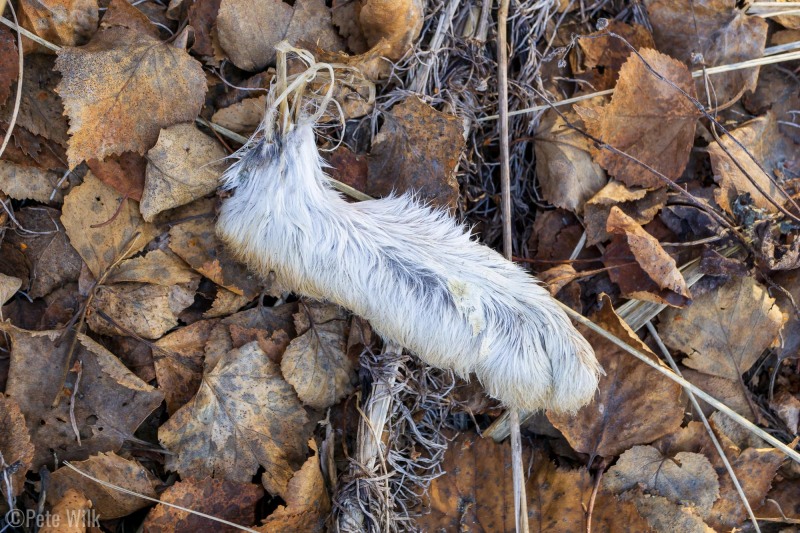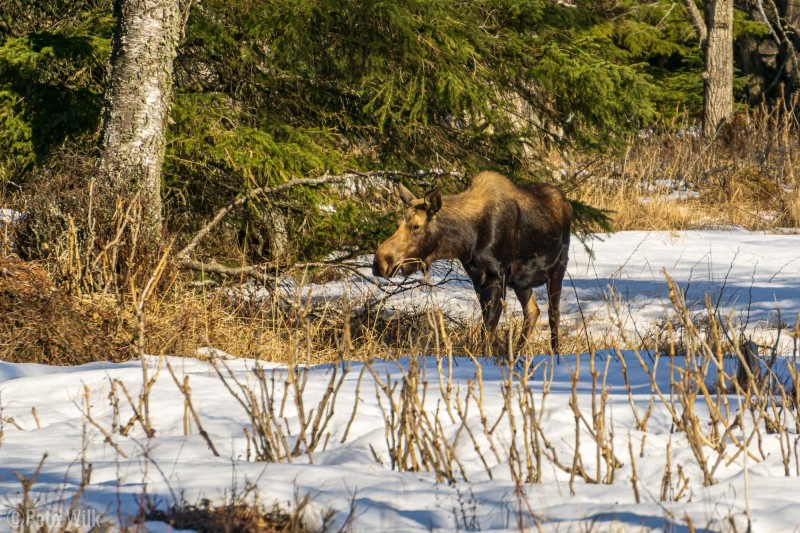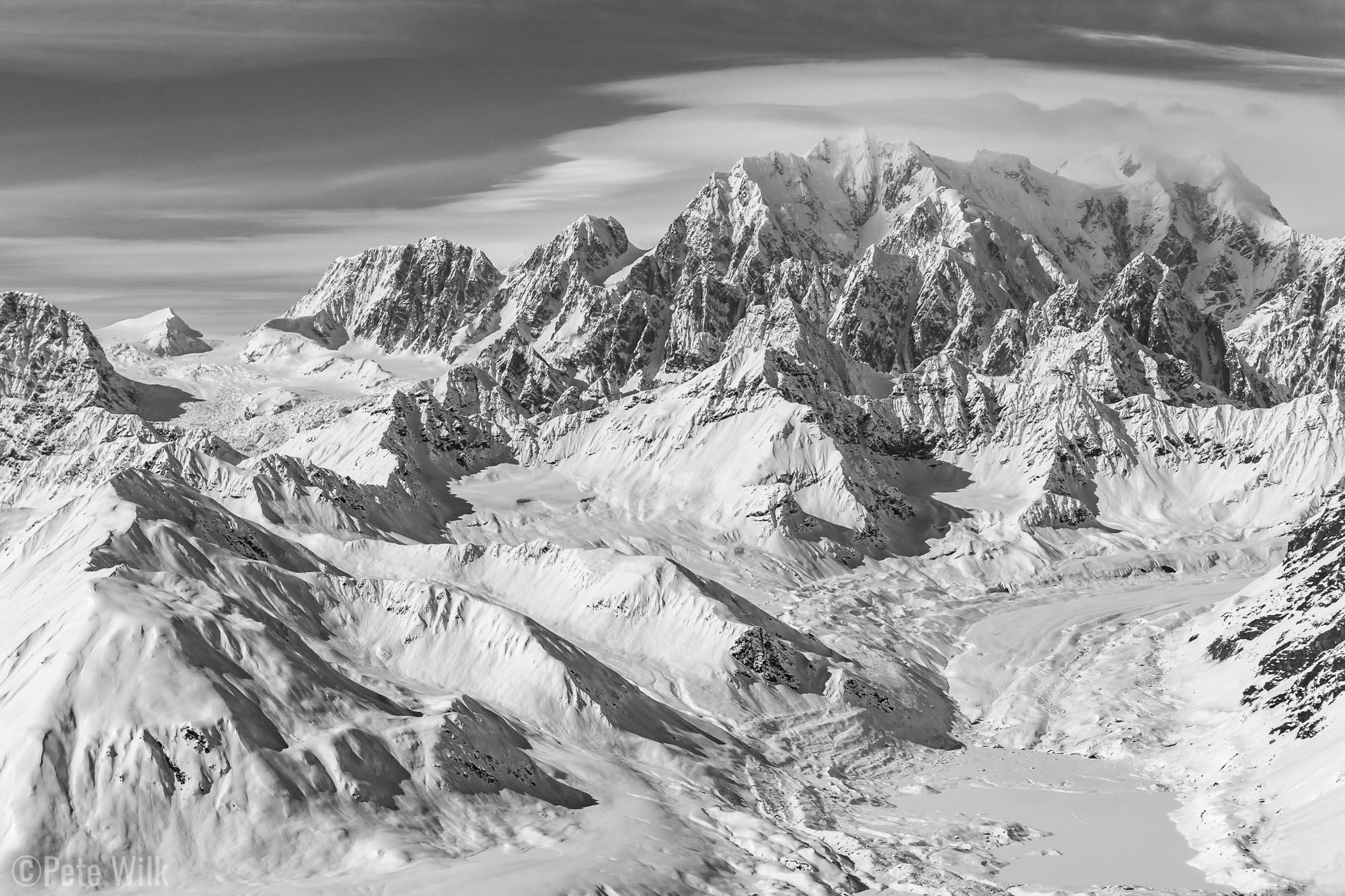
April 6–14, 2022
For a number of years I’ve been hoping to get back to Alaska. A few obstacles have prevented me, lack of partners, lack of motivation, pandemic, etc. Finally, this year all the pieces fell into place for a return trip. It was for a shorter trip this time around, effectively a “smash and grab” trip.
I’ve had my eye on Mt. Huntington as an objective. There’s a few really nice routes to the elusive summit, all of them technical. Frequently, the summit isn’t reached for many reasons, weather, time, conditions, etc. This trip fit that similar story.
The trip was planned for about a week, so effectively a “smash and grab” type of trip. For this tactic we’d be watching the weather and heading to Talkeetna, AK when the weather looked favorable. I booked my flight to Anchorage with award miles so that I could shuffle flights around if needed.
I decided a couple years ago I wanted to hire a guide for another AK trip. While I had a bit of success on my first trip and less so on the second, I hoped that hiring a rope gun would improve the chances of getting up something a bit more committing than I could deal with on my own skill. My friend Micah is a guide out of Ridgeway, CO who I’ve known for years. Luckily he had some time unbooked in the first half of April so I had him schedule me and get the wheels in motion for a trip during that time.
We discussed route options and settled on the Harvard Route on Mt. Huntington. The route goes at 5.9/M5, C1, 70° ice, VI. What’s all that mean? Well 5.9 is pretty obvious. The M5 means the difficulty of mixed climbing, so using ice tools on rock. C1 means some aid climbing where pieces of protection are used to enable upward progress. The angle of the ice is straightforward. The last bit is the commitment grade, which tops out at VII, so this is a committing route which will take a couple of days to complete.
The original departure from Salt Lake was planned for April 3. As we got closer to that date we saw that the weather didn’t look favorable for us to be in Talkeetna. The forecast predicted snow, though not a significant amount. We opted to delay our flights a few days to hopefully let the weather improve and the snow to settle. While Talkeetna is a charming little town, it can get old pretty fast, as well as expensive, therefore waiting out weather at home is a better option.
Fortunately, the weather forecasts did show an improvement after the April 3-4 storm. In fact it looked like it would be pretty fantastic early spring conditions. A bit cold, in the single digits during the day, but little wind and lots of sun. I moved my flights to Wednesday April 6.
Micah picked me up at the airport, he had arrived the previous day to get a rental car and the bulk of our food. I haven’t had a rental on my previous trips and I have to say it was great. Not being locked into a location due to lack of transportation is nice. After a few errands in Anchorage we headed to Talkeetna, about 2 hours away.
Micah had been in contact consistently with Talkeetna Air Taxi (TAT), our preferred transport to the glacier, for about a week to check on conditions and such. We headed there after we arrived to see how things were looking after the first trips in/out of the range since the weather had cleared from the storm. Reports were between 2-4 feet of snow depending on the location. That was considerably more than forecasted and more than we wanted to hear.
The East Fork of the Tokositna Glacier below the west face of Mt. Huntington is a tight spot for landing a plane. It also can frequently hold weather even when it is clear nearby. As a result TAT, namely the head honcho Paul Roderick, wanted to wait at least a couple days before flying us in. Unfortunately, we didn’t get this info before we’d left home since we might have stayed another day or two at home before flying to AK, but such is the nature of these trips. Once you’re standing in the office the staff really know your committed so then they really give you the truth on what they are willing to do for you. They did give us the option of taking a scenic flight later Thursday to get an idea of conditions.

I haven’t been on a scenic flight before and Micah thought it would be worth the money to get an idea of what routes were in/out in case we wanted to change plans. For the scenic flight we headed passed the Harvard and then down to the Mountain House on the West Fork of the Ruth Glacier. I haven’t been to this spot before so it was new scenery to me. If I ever strike it rich, perhaps I’ll book some nights at the Sheldon Chalet. From there we cruised down the Ruth Gorge and saw the lack of ice on Mt. Dickey. After the scenic flight we decided that our original plan on Huntington was still on, just that we might have to contend with snow problems.
Micah and I settled into the Talkeetna hang for a couple of days. I brought my work computer so I was able to work from the library on Friday. The library, is another convenience not easily available to the non-rental car visitor (like me in the past). There were only a few places open for food in town. Denali Brewing, Mile High Pizza Pie, and Conscious Coffee—we made the rounds. There might have been a couple others, but I’m not sure.
We stayed at the TAT Bunkhouse where I’ve stayed in previous trips. While not glamorous it is at least a place to stay that isn’t a tent, and it is free. There we met Matt Cornell, Jackson Marvell, Austin Schmitz, and Jack Cramer. Matt I’ve met before in Bozeman at the Mummy III. Jackson I’ve seen info about climbs he’s done. Jack and Austin were along to photo/video whatever impressively difficult route Matt and Jackson wanted to do (read more on their trip here). They were waiting to get dropped off in the Revelation mountains farther to the east of the Alaska Range where we were heading.
Saturday dawned clear and we headed for breakfast to make a 9am arrival at TAT for our potential fly-in. Courtney, the spunky scheduling manager, gave us the thumbs up, but not until about 10-11am or so. We’d used the previous afternoon to pack our glacier bags and weigh them so we just needed to wait. We killed some time chatting with the ramp agent (ground crew) that Micah knew and giving Beaver the TAT office cat some scratches.
It was just Paul, Courtney, and us for the fly-in so I got to sit in the front seat—always an impressive view. Paul gave us another look at the route on the way in before circling around to drop into the left side of the East Fork of the Toke. A serac drop perhaps over the winter has sent debris across the right half of the possible landing zone. As we circled around we’d noticed that there were two or three other sets of landing tracks on the runway. It seems that Paul had come in the previous day to scope out how firm the landing zone was.

Paul announced it was -4°F and said we’d “unload hot”, which means he’s going to stay in the aircraft and keep it running. And oh, don’t delay in getting your crap out since he’s burning gas just sitting there. All this was quite understandable given the temp. Courtney helped us move our stuff out of the back of the plane and next to the airplane. After just a few minutes of that, she hopped back in and we huddled next to our gear as Paul roared away downhill on the glacier and then floated up and away. The feeling immediately after being dropped off on a glacier in some of the most beautiful and imposing terrain—now silent with the plane gone—is one that remains clear in my memory.
Thankfully, just after the plane left the sun crested the ridge and bathed us in sunlight and warmth. The air temp was still in the low single digits, but with the sun it was comfortable. We dug out camp and then got to work on tracking out a runway. For better visibility and stability, Paul wanted us to track out a runway. While this burns a lot of time and some energy, it is insurance that they will come and get you when the visibility is closing in.
Day 1 of the Harvard Route
Around 5am the next morning we got up. While this isn’t exactly a true alpine start it was sufficient for our purposes. During early April the sun rises a bit before 7am and set around 9:15pm so there’s a lot of daylight to climb with. The other reason for a bit later start was that we didn’t have time the previous day to recon the approach through the crevasses.
In 2021 Micah had guided the West Face Couloir and had used an all ski approach by going right the obvious crevasses between the base of that route and camp. We tried the same approach this time, but were foiled by bus eating crevasses with no options for getting through them. After burning a couple hours we headed back towards camp and then up the left side of the approach. While less crevassed it is steeper and requires booting it instead of skiing. Thus began the snow wallowing.
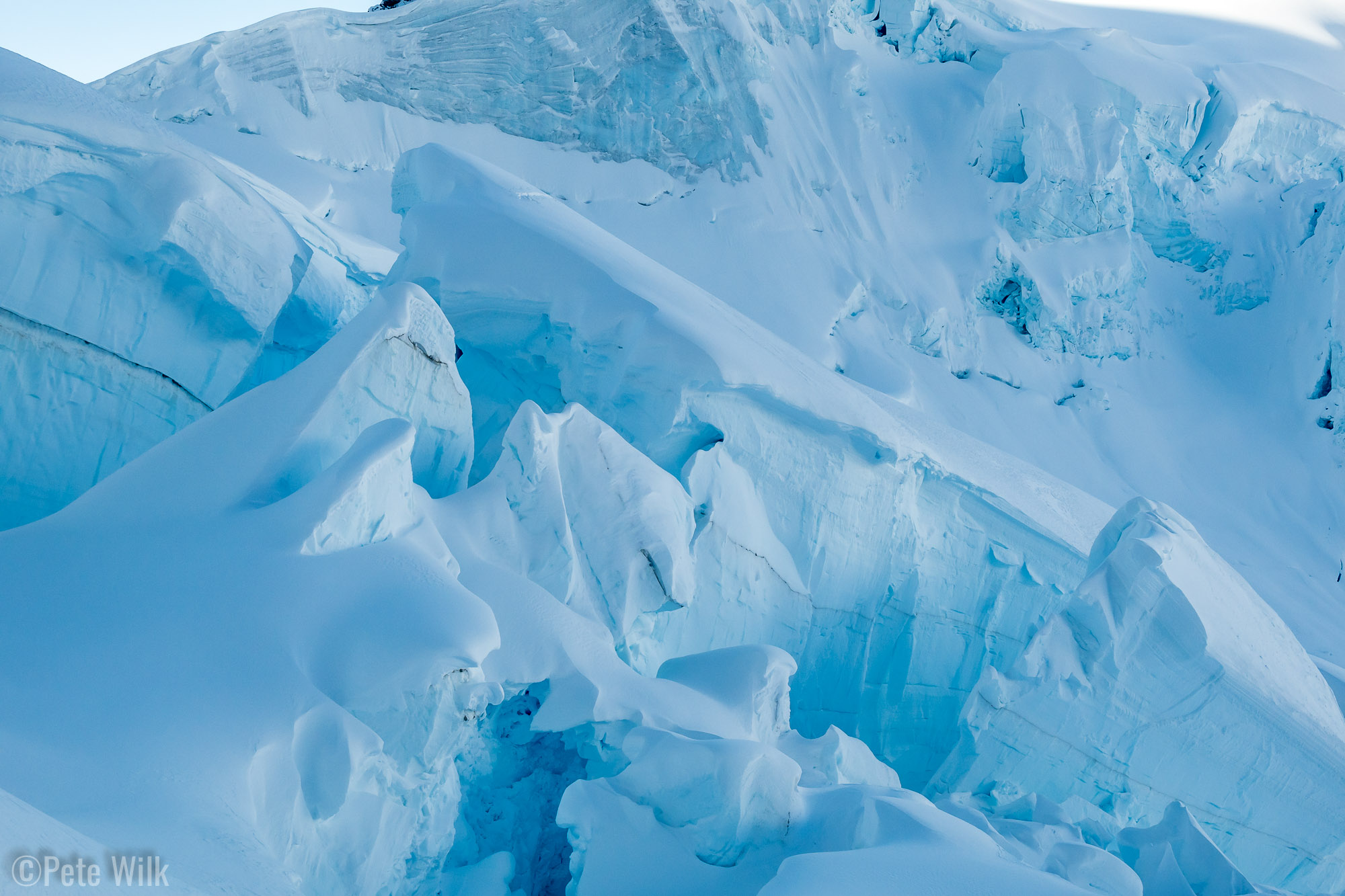
We headed up the 40° snow and around a few obvious crevasses. The snow was deep but not soul crushingly—yet. Getting passed the initial steep section was traversed on mostly flat ground across some avalanche debris which supported us reasonably well. After that we made the couple hundred more yards toward the bergschrund and the start of the Approach Couloir for our route. Here’s were the reality of the snow started to become clear.
Post holing on flat ground is bad enough, but post holing up a 50° slope is frustrating at best. It is a bit like swimming uphill. Time slowed down as our simul–climbing came to crawling pace. Once on a steep enough slope the snow in front of you is at your waist or higher necessitating kneeing the snow to make a space so that you can make a step. Pull some more snow with your hands down into the space you made. That step then becomes stomping the snow down until it is firm enough to stand on. Then repeat for the other foot. And for every step we lost 1/2 of one.
Micah continued in front and made it to the ‘schrund. This is the point up the slope of a mountain where the rate of the snow/ice is flowing downhill faster than the snow/ice above it. This creates a crevasse which often can be difficult to cross. In this case it posed a bit of difficulty, but not terrible. At the obvious spot to cross, a snow bridge, Micah found it to not be supportable—the hard way since it collapsed on him and he fell in. I didn’t realized this until I looked up and couldn’t see him anymore, but the rope was slack—he’d fallen onto a plug of snow inside. After crawling out we traversed the ‘schrund a little but eventually decided just a little left of our first attempt would be OK. Micah spent a while clearing and filling a spot to cross. Then, finally he was able to swing into some blue ice just a few feet above that allowed some firm progress.
Micah let out the full length of the rope and we simul-climbed 2/3 of the couloir skirting between the edge of the snow/ice where there was firmness but not calf burning 60° ice. Two pitches from the top of the couloir we swapped and I tackled the cornice at the top of the couloir. This wasn’t too bad, perhaps only 4-5 ft tall and had broken at some point recently so it didn’t require tunneling. I was able to get a good screw a little down from the cornice so it was protected as well. I pulled through the cornice by swinging into somewhat firm windblown snow over the cornice and into the sun. I was able to find an anchor up and to the left along the ridge line to bring Micah up.

The next pitch was also mine and called the Alley, which is a narrow chimney slot in the rocks on the ridge. But first I needed to swim through 80 vertical feet of 60° snow—it took about 45 minutes. Finally on the rock I placed a couple of cams as I squirmed up the chimney. I wished my sleeping pad, attached to the outside of my pack, wasn’t on the side, which made my profile that much wider. In the back of the chimney there was some ice and I found some white hemp rope, which I used to help keep my balance. There were more sections to come that we found the same rope. It is likely rope from the first ascent party in 1965.
I was able to get through the awkward chimney and into the snow above. Luckily the snow on the ridge was wind affected and firmer than in the couloir below. Trudging up the slope toward some less steep ground I realized it was probably a large cornice and a bad idea to keep going that way. I veered back to the right to rocks poking out indicating I was on more secure ground. This gave a bit of chance for protection as well since we were simul-climbing at this point. I placed a screw and finally spotted our next landmark, the Upper Park Bivy.
Getting to the bivy spot I tossed a sling around a spike of rock and belayed Micah up. The spot is beside a large boulder and has a great 180° view west. The slope pitches off at +50° toward the Phantom Wall and a few more meters in the opposite direction over the aforementioned cornice.
The Harvard Route faces west so we were in full sun and would be for hours. The next part of the route is tricky mixed climbing with the next bivy site 800′ vertical feet and many pitches away. Setting up camp at this point was the right call since it would allow us to take advantage of the sun while we made camp and ate.

One of objectives I had for this trip was to do a longer route that required a bivouac (bivy) on route—something I haven’t done thus far. This was a pretty good spot for a first bivy. Micah was able to shovel out a tent sized platform, but it was clear we would stay roped up, even in the tent and our sleeping bags.
One of the things I was surprised about for this trip was the size of the packs we took. I initially thought a 45-50L pack would be best. In fact, once all the climbing gear was on our harnesses, the pack really only needed to be 35-40L. They were stuffed, but adequately sized and made for more pleasant climbing. All the stuff in the pack was sleeping stuff, food, gloves, water, a few “in case” things, and a belay jacket.
We crawled in the tent out of the mild wind that had whipped up. Two person alpine tents are never spacious, but it was adequate. We heated up some water and made food while getting a beautiful view of Begguya (Mt. Hunter) and Sultana (Mt. Foraker).
Once the sun dipped behind a distant ridge the temps dropped off. We closed the tent door and zipped into our sleeping bags. One nice thing with this type of climbing, is there’s no need to do a change of clothes since you are trying not to get hot enough to sweat at all. I had all my layers on in my 10°F down bag as well as the massive Patagonia Grade VII puffy jacket I’d borrowed. That jacket, is an amazing piece of clothing. I honestly would have a hard time finding fault with it (beside cost). It is so well executed for exactly what I was doing. Bravo to Patagonia’s designers on that one. I had a bit of a restless night, but was warm even though it was probably in the negative single digits overnight.
Day 2 of the Harvard Route
The next day we started around 6am making breakfast and heating up water. Our original hope was that we’d be at the Nose Bivy after the first day, which is about 2/3 of the way up the route. We were way behind that plan, but since the weather was still good there was no reason to stop going up. We made some oatmeal and coffee before starting again.
Micah lead since the pitches were difficult enough that they might have been above my pay grade on lead. The first pitch of the Spiral is an M5/5.9 pitch that goes up a shallow groove in the rock. Needless to say we were the first party on the route this season. This meant lots of snow on the rock and required clearing to see holds and protection. Micah scratched his way up the shallow crack, sweeping away sugar snow along the way. While a little slow going the climbing was good on mostly solid rock, and reasonably protected.

We were navigating up the ridge line on rock and snow. The anchors were already in place. This meant there was some assortment of old slings and webbing attached to rusty pitons, knifeblades, and frayed nuts—classic alpine anchors. Some of these anchors probably could be cleaned up a bit to get rid of the old stuff. Having the anchors in place did allow for the option of rappelling the route should we need to do that.
A couple less memorable pitches brought us to a point where the route diverges into three options. Micah took the center of the three as it was most recommended by his colleagues. This went up a shallow corner which wasn’t too steep, but had 3-4 feet of overhanging snow at the top of it before veering right into a chimney. Carefully heading up Micah finally got to the snow and started cleaning it out. It was complete sugar and all needed to come down before he could make progress. The back of the chimney had crap ice, not good enough to climb or place good protection into. This squeeze though the chimney ended at blob of snow in the sun. This was one of the more interesting pitches, though I’ll stop short of calling it good climbing.
Three or four more slow pitches of 50-60° snow trenching got us to the Nose Bivy. It took hours to get through this snow since it was similar in consistency to the stuff we’d climbed the previous day. Getting to the bivy site we again chopped and shoveled a spot for the tent. This spot was probably a little worse than the previous since the tent was sort of hanging off the platform a bit. We anchored the tent with an ice screw and a #3 cam. While the temps had been cold, we had good weather since it was sunny and little wind.
Day 3 of the Harvard Route
We’d chatted about our progress the previous night and decided to head down the route the next morning. Our original plans had been to spend 2 to 2.5 days on route and took food for that. For that strategy to have worked we should have made it to the Nose Bivy on the first day. From the Nose we were a few pitches away from the West Face Couloir which is the typical descent route. It would have been nice to go down that way, but we had a few, not insignificant pitches to climb before that. Additionally, at the bottom of the WFC a lot of steep, and likely unprotectable, snow to down climb. The benefit to rappelling down the Harvard was that we knew the anchors and the down climbing wasn’t as committing. Given the potential sketchy snow we planned to head back down the Harvard.
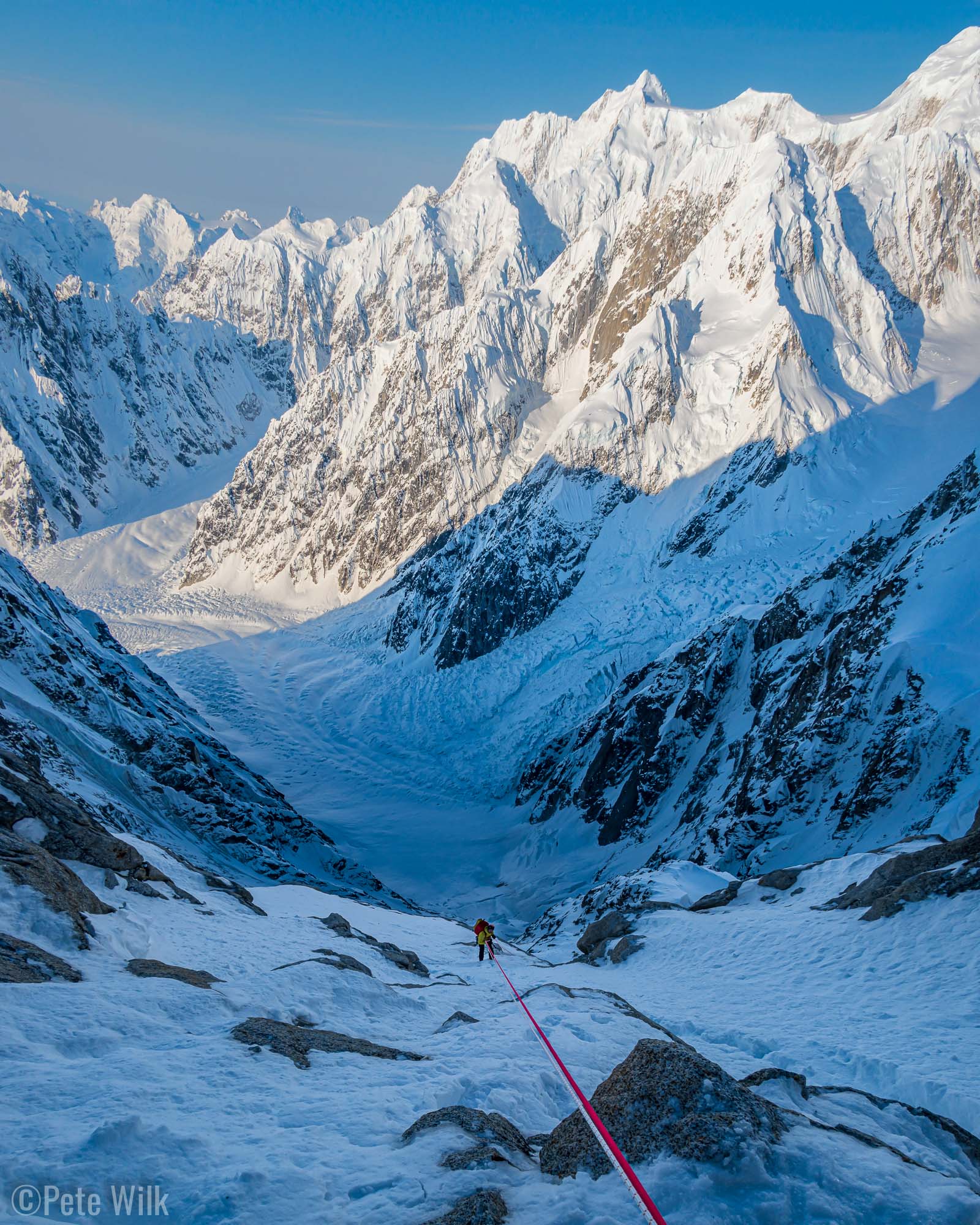
While the anchors weren’t spectacular they were pretty average “OK” anchors for alpine climbing. The exception being the anchor in the Spiral which was probably the worst placed anchor I’ve ever been attached to. This thing was not just hanging, but at about waist level in the hang there was an undercut so that your feet were barely touching anything—so uncomfortable.
We eventually got to our first bivy and then dropped into the Access Couloir. From here we were able to do V-threads down a few raps to get over the ‘schrund. I retraced our steps as best I could once back down onto flatter ground. From there we were home free and in the sun at base camp.
Post Climb
Getting back to camp after a big climbing day is always a great feeling, this one more so since we’d been away for two days. Micah cooked up some quesadillas which I washed down with some scotch. While I offered some to him as well, he’s not much of a drinker so I had one for him.
The next day we got picked up by TAT, who showed up a bit earlier than expected and caused us strike camp in only 25 minutes. It turned out that’s all we really needed anyway. On the way back we landed at the Pika Glacier, which is a ski destination right now, for a couple skiers. The rock in the Pika looks amazing and reminds me of the aiguilles in Chamonix. It got me thinking that perhaps my next AK trip will be slanted toward the summer for some rock climbing.
Once back into Talkeetna we unpacked and dried our stuff then repacked so we could head to Anchorage where our lodging options could be a bit more comfortable. As I said, having a car was so much more casual than previous trips having to bum or wait for a shuttle to arrive in Talkeetna.

Another party—Anna Pfaff and Priti Wright—five or six days later were able to summit via the Harvard. Hats off to them in pulling it off! Hopefully our snow wallowing played some small part in their success. It seems as though Anna has a rough road ahead though, she suffered some bad frostbite on her toes. Best of luck to her and hopefully full recovery.


